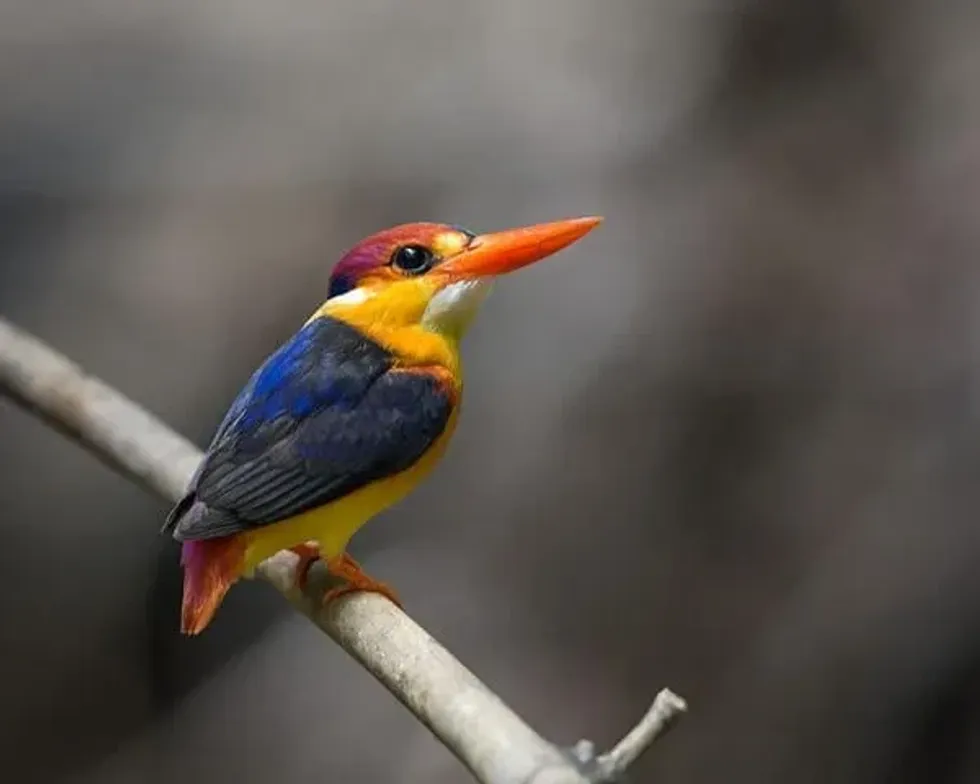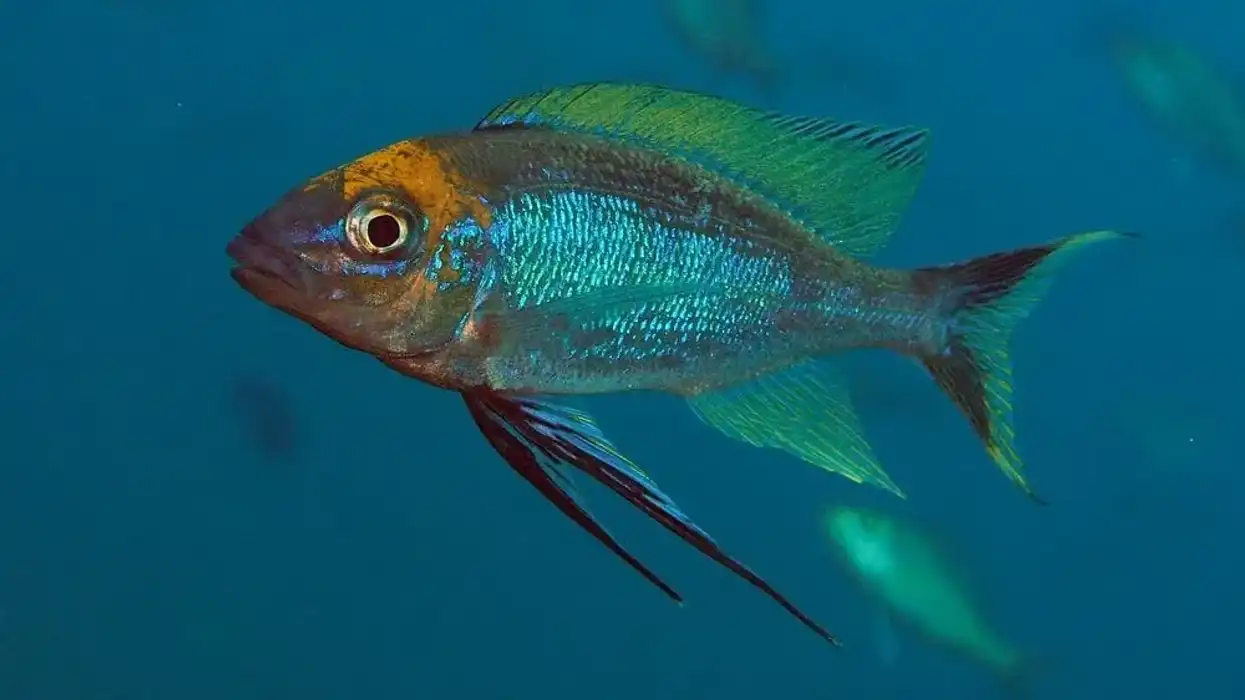Isn't it astonishing that there are so many animals on this magnificent planet that are still not known to humans?
One of them is this tiny and rare bird of the Alcedinidae family, the South Philippine dwarf kingfisher (Ceyx mindanensis). They are endemic to the Philippines, particularly on the islands of Basilan and Mindanao.
This forest kingfisher was discovered 130 years ago in the forests of the Philippines during the Steere Expedition.
Despite the fact that they were discovered in 1890, no one was able to learn much about this magnificent species for its sneaky behavior.
This bird can be pretty challenging to observe since it silently glides from one branch to another through the dense forests of the Philippines.
The good news is that Dr. Miguel David de Leon, a field biologist with the Robert S. Kennedy Bird Conservancy, along with his team members, photographed a fledgling for the first time on March 11, 2020, after 10 years of meticulous research.
Due to his pictures, we are able to get a sight of this beautiful creature and now scientists can understand more about the breeding, other behavior of these birds, and try to find more measures to conserve them.
To know more about these rare birds, keep reading. If you find this article intriguing, you may also like to know about pigeon and least sandpiper.
South Philippine Dwarf Kingfisher Interesting Facts
What type of animal is a South Philippine dwarf kingfisher?
The Philippine dwarf kingfisher (Ceyx melanurus) is a tiny forest kingfisher bird. It is a member of the Alcedinidae family. The South Philippine dwarf kingfisher is a subspecies of this bird.
What class of animal does a South Philippine dwarf kingfisher belong to?
These kingfishers belong to the Aves class of the Animal Kingdom. This is an extremely rare species that was discovered in 1890 during the Philippines' Steere Expedition.
How many South Philippine dwarf kingfishers are there in the world?
The population of this species is assumed to be 10,000-20,000 individuals. These birds, like all other Philippine dwarf kingfishers (Ceyx melanurus), face extreme threats of habitat loss, climate change, and illegal hunting and are rapidly declining in number.
Where does a South Philippine dwarf kingfisher live?
This forest kingfisher is endemic to the Philippines, particularly in the islands of Basilan and Mindanao. De Leon and his teammates found two nesting sites of this bird at Mapawa Nature Park in Cagayan de Oro of the Philippines.
One of the nesting sites, however, was demolished by a few intruders before any research could be done, while another was discovered undisturbed. The nest was built on a tree that was 10 ft (3 m) above the surface of the forest.
What is a South Philippine dwarf kingfisher's habitat?
The Philippine dwarf kingfisher (Ceyx melanurus) has a limited range of habitat which includes the tropical and sub-tropical forests, second-growth forests, moist lowlands of the Philippines.
Who do South Philippine dwarf kingfishers live with?
Since there is limited data about the lifestyle of Philippine dwarf kingfishers (Ceyx melanurus), it is not known whether they are social or solitary. However, the majority of kingfishers in the Alcedinidae family live in solitary breeding pairs that defend their territories together so it is assumed that these species are similar too.
How long does a South Philippine dwarf kingfisher live?
Due to a lack of data, the lifespan of this species like all other Philippine dwarf kingfishers (Ceyx melanurus) is unknown. However, usually, kingfishers have a prolonged lifespan depending on the species.
How do they reproduce?
There is not enough information about the mating behavior of the Philippine dwarf kingfisher (Ceyx melanurus). It is assumed that like all other kingfishers, these birds are also monogamous in nature and lay three to six eggs approximately.
These rare and elusive birds build their nests in the hole cavities of trees and hide their babies in them.
This is why there was no information on any fledgling of these kingfishers (Ceyx melanurus). However, in 2020, a fledgling was photographed by Miguel David De Leon along with his team members.
What is their conservation status?
According to the International Union for Conservation of Nature (IUCN) Red List, the conservation status of this bird, like other Philippine dwarf kingfishers (Ceyx melanurus), is Vulnerable. They are declining in number due to habitat loss, climate change, and illegal hunting.
South Philippine Dwarf Kingfisher Fun Facts
What do South Philippine dwarf kingfishers look like?
These tiny and rare birds have a remarkable plumage of orange, metallic lilac, and bright blue dots and are incredibly colorful. There is not much information about the appearance of these birds. It is known from the picture photographed of a fledgling that the young ones have black beaks initially which changes to orange as they grow into adults.
kingfisher
*Please note that this is a picture of the oriental dwarf kingfisher, not a South Philippine dwarf kingfisher. If you have an image of South Philippine dwarf kingfisher, please let us know at hello@kidadl.com.
How cute are they?
Just like belted kingfisher, these birds are extremely adorable because of their tiny size and striking bright plumage.
How do they communicate?
There is not much information about the communication of the South Philippine dwarf kingfisher (Ceyx mindanensis) since research is still going on about this rare species. It is only known that they have a distinct call which is high-pitched and like an insect with an inaudible 'zeep'.
How big is a South Philippine dwarf kingfisher?
These birds are 5 in (12.7 cm) in size which is twice the size of a bee-hummingbird.
How fast can a South Philippine dwarf kingfisher fly?
The exact speed of this species is not recorded yet. However, they have a pretty quick flight which is one of the main reasons why they are so elusive and could not be observed for research for more than 100 years.
How much does a South Philippine dwarf kingfisher weigh?
These kingfishers are exceedingly light, weighing only 0.6 oz (17 g). They are almost the same size as a chipping sparrow.
What are the male and female names of the species?
The male and female of the kingfisher species have no unique names. They are just referred to as a male Philippine dwarf kingfisher and a female Philippine dwarf kingfisher.
What would you call a baby South Philippine dwarf kingfisher?
Like any other bird, the baby of this species is called a chick or a nestling.
What do they eat?
The diet of these birds consists of small creatures like earthworms, bugs, small lizards, and other small invertebrates. Unlike common kingfishers, these small birds of the Alcedinidae family do not prey on fish.
Are they dangerous?
No, these rare and tiny forest kingfishers are not known to pose any threat to humans. They are only dangerous to invertebrates they feast on. It is assumed that they are quite territorial like any other kingfisher species.
Would they make a good pet?
No, these birds face the threat of extinction and are declining rapidly in number. Moreover, they are wild birds and should not be domesticated.
Did you know...
Johann Jakob Kaup, a German scientist, was the first to describe the Philippine kingfishers (Ceyx melanurus) in 1848 with the binomial name Alcedo melanura.
How many species of kingfisher are there?
The Alcedinidae family, which is further classified into three subfamilies and 19 genera, has 114 species of kingfishers all over the world. The oriental dwarf kingfisher, which is indigenous to much of the Indian subcontinent and Southeast Asia, is an example of a dwarf kingfisher.
What was the South Philippine dwarf kingfisher most known for?
The most well-known feature of these rare kingfishers is that owing to their sneaky nature, they have remained elusive for over a century. Another interesting characteristic is their unusual high-pitched insect-like call, which is practically inaudible.
Here at Kidadl, we have carefully created lots of interesting family-friendly animal facts for everyone to discover! For more relatable content, check out these ani bird facts and vulture facts for kids pages.
You can even occupy yourself at home by coloring in one of our free printable South Philippine Dwarf Kingfisher coloring pages.
*Please note that this is a picture of an oriental dwarf kingfisher, belonging to the same genus as the South Philippine dwarf kingfisher. If you have an image of a South Philippine dwarf kingfisher, please let us know at hello@kidadl.com.









